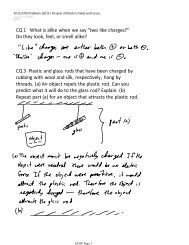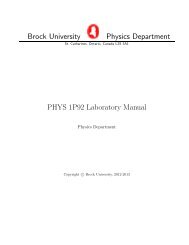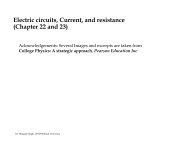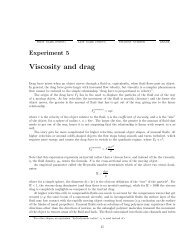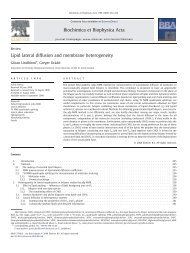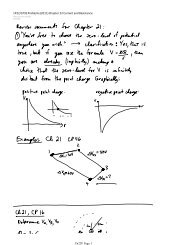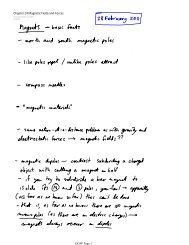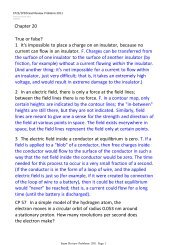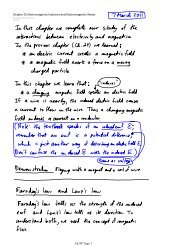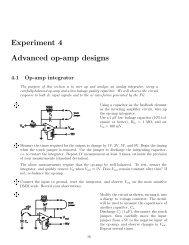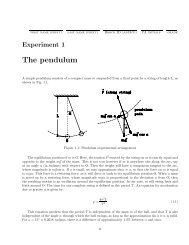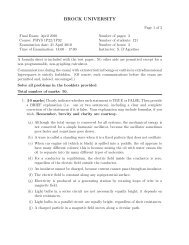Assignment No. 9
Assignment No. 9
Assignment No. 9
Create successful ePaper yourself
Turn your PDF publications into a flip-book with our unique Google optimized e-Paper software.
<strong>Assignment</strong> <strong>No</strong>. 9<br />
Physics 4P52<br />
Due Thursday, March 27, 2008<br />
1. A one-dimensional harmonic oscillator is in its ground state for t 0. Show that the t → ∞ (τ finite)<br />
limit of your expression is independent of time. Is this reasonable or surprising?<br />
2. A hydrogen atom in its ground state |n = 1 l = 0 m = 0〉 is placed between the plates<br />
of a capacitor. A time-dependent but spatially uniform electric field (not potential!)<br />
is applied as follows:<br />
{<br />
0 , t < 0 ,<br />
E =<br />
E 0 e −t/τ , t ≥ 0 ,<br />
where E 0 is in the positive z-direction. Using time-dependent perturbation theory,<br />
compute the probability for the atom to be found at t ≫ τ in each of the three 2p<br />
states: |n = 2 l = 1 m = −1〉, |n = 2 l = 1 m = 0〉, |n = 2 l = 1 m = +1〉. Repeat<br />
the problem for 2s state |n = 2 l = 0 m = 0〉. You need not attempt to evaluate<br />
radial integrals, but perform all other integrations (with respect to angles and time).<br />
(Hint: Use parity selection rules and keep in mind that z is a component of a vector<br />
operator (r) for which we established certain selection rules (see pp. 29-30 of the<br />
notes).)<br />
3. Consider a composite system made up of two spin-1/2 objects. For t
(a) By solving the problem exactly.<br />
(b) By solving the problem assuming the validity of first-order time-dependent perturbation<br />
theory with Ĥ as a perturbation switched on at t =0. Under what<br />
condition does (b) give the correct result?<br />
2



